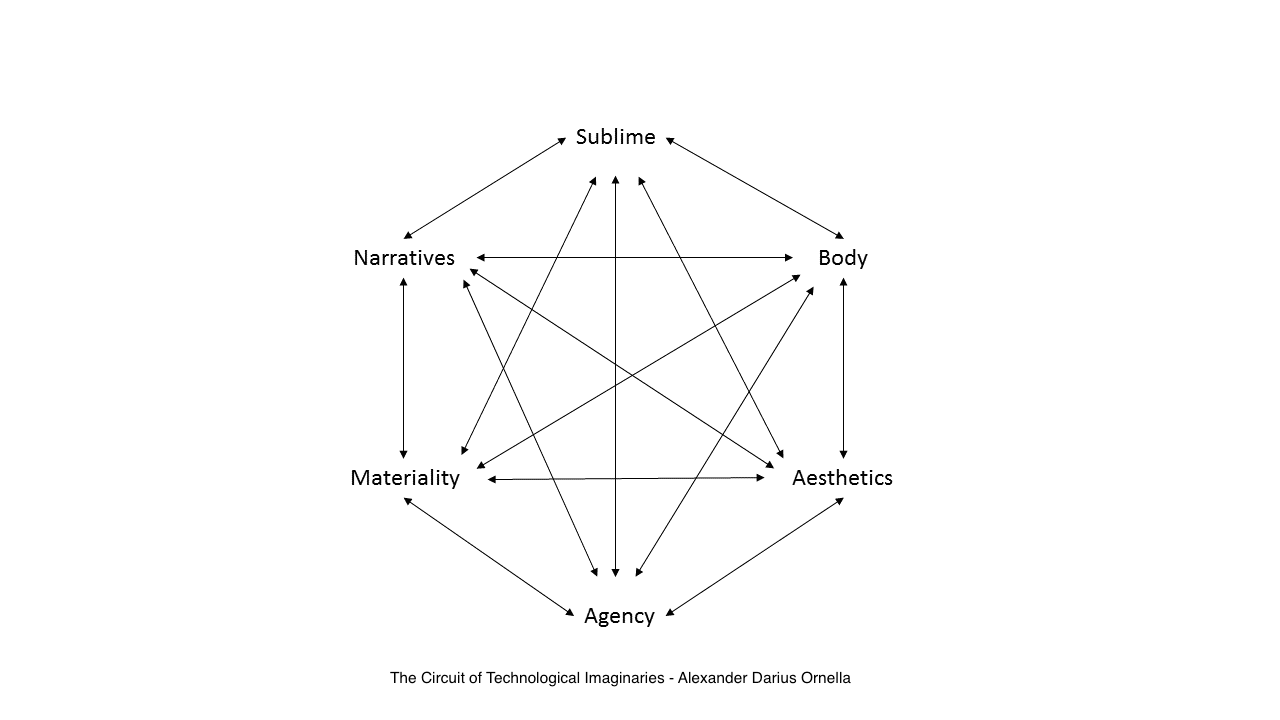Technological imaginaries are not confined to the imaginary realm, dreams, or narratives but what we imagine and how we imagine impacts our lived experiences and our practices. In an essay on “The Real Consequences of Imaginary Sex Acts”, Brett Lunceford argues that imagined, labeled, and named sex acts are more than mere fantasy. “My contention is that such imagined acts serve a normative function, providing limits on not only sexuality but also the kinds of individuals worthy of such acts.”[1] A similar argument can be made about technological imaginaries: while creating, designing, and using technologies can unlock human creativity, technologies, the expectations we have and the stories we tell also frame our experiences.
In their study of the cultural impact of the Sony Walkman, Paul du Gay, Stuart Hall and others have created the Circuit of Culture and identified five cultural processes to help analyze cultural artefacts. These five processes are – in no particular order: identity, representation, consumption, production, and regulation.[2] I propose to use du Gay/Hall’s framework and create a ‘Circuit of Technological Imaginaries’. I want to point out that this is just a draft version open for discussion and the elements are not limited to those I have identified.
Fig. 1: The Circuit of Technological Imaginaries
This paper explores the aspects of narratives, body, sublime, materiality, agency, and aesthetics as important elements of technological imaginaries. They are intertwined and interact with each other on multiple levels.
You can read my paper including detailed description of the Circuit here.
This paper is part of the project Religion in Cultural Imaginary and you can order the book from the publishers website or on Amazon.
